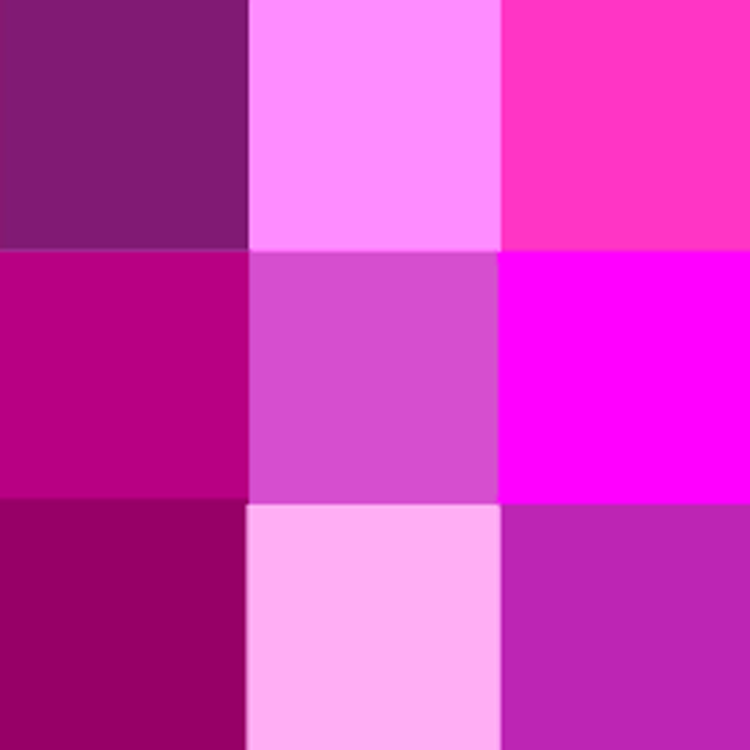Do the light gray triangular shapes in the diagram below have the same hue and brightness?

Do the light gray triangular shapes in the diagram below have the same hue and brightness?

Look at the colored rings from a distance. Then decide which ones have YELLOW inner circles, and which ones have BLUE inner circles.

Most of us are familiar with magenta — it’s a kind of purplish-red that exists between blue and red on color wheels (color wheels don’t accurately represent the physics of photons, but they represent the philosophical reality: color is a human construct that helps us interpret wavelengths to better understand our world).
The odd thing about color vision is that magenta (or pink) color is not in the spectrum of colors, meaning it cannot be generated by a single wavelength of light. Our brains interpret the color sensation of magenta/pink as ‘absence’ of green.
Source: https://www.archimedes-lab.org/Gallery/new_optical_illusions/pages/10n-Pink_rose.html

Curiously enough, the cubes don’t move only the background color changes…

Here is my tutorial to create an amazing autokinetic animation.
Look at the picture from a certain distance and check which colors are in the patchwork. Image taken from my book “Fantastic Optical Illusions” available from Amazon US: https://www.amazon.com/dp/178739235X/?tag=archimelabpuz-20 and Amazon UK: https://www.amazon.co.uk/dp/178739235X/?tag=archimedeslab-21

Our visual system can interpret colors and shades in surprising ways. With this 3×3 Tic-Tac-Toe grid I would like to show that our sensibility to color brightness can be easily fooled. Well, do you notice something particular in the grid below?

Order now your exclusive “Illusion d’Optique” playing card deck designed by illusion Master Gianni A. Sarcone!
Packaging printed with optical ink and placed in a protective transparent plastic case.
54 eye-popping optical illusions to play and to experiment with!
Continue ReadingIn the example below, in the left column, you can see two apples—one green, one red—appearing as a single solid color with a black cross over them. Now, if we remove the thick black lines, each apple clearly appears divided into four quarters of different shades—even though they are exactly the same in both columns, with and without the black cross.

Here are two projects involving the geometrical-constructive art of Piet Mondrian, one of my preferred artists, the golden ratio and ϕ. For this purpose, I used the same color palette favored by Mondrian: yellow, red, blue, black and gray.
In the first project, I used squares, that are proportional to each other by the golden ratio or ϕ, to prove the Pythagorean theorem as shown in the Zhoubi Suanjing (or Chou Pei Suan Ching – 周髀算經), one of the oldest Chinese mathematical texts (circa b.c. 200).
I would like to present a new way of my invention to animate static images with the interaction of additive and subtractive colors. I have called this new animation system KINECHROMATICS (patent pending).
The static image below is made of 3 layers having each a different subtractive primary color (magenta, yellow, or cyan) blended in ‘multiply mode’… Continue Reading
Continue Reading